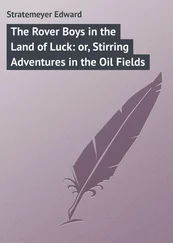Stephen Fry - The Ode Less Travelled - Unlocking The Poet Within
Здесь есть возможность читать онлайн «Stephen Fry - The Ode Less Travelled - Unlocking The Poet Within» весь текст электронной книги совершенно бесплатно (целиком полную версию без сокращений). В некоторых случаях можно слушать аудио, скачать через торрент в формате fb2 и присутствует краткое содержание. Жанр: Старинная литература, на английском языке. Описание произведения, (предисловие) а так же отзывы посетителей доступны на портале библиотеки ЛибКат.
- Название:The Ode Less Travelled: Unlocking The Poet Within
- Автор:
- Жанр:
- Год:неизвестен
- ISBN:нет данных
- Рейтинг книги:3 / 5. Голосов: 1
-
Избранное:Добавить в избранное
- Отзывы:
-
Ваша оценка:
- 60
- 1
- 2
- 3
- 4
- 5
The Ode Less Travelled: Unlocking The Poet Within: краткое содержание, описание и аннотация
Предлагаем к чтению аннотацию, описание, краткое содержание или предисловие (зависит от того, что написал сам автор книги «The Ode Less Travelled: Unlocking The Poet Within»). Если вы не нашли необходимую информацию о книге — напишите в комментариях, мы постараемся отыскать её.
The Ode Less Travelled: Unlocking The Poet Within — читать онлайн бесплатно полную книгу (весь текст) целиком
Ниже представлен текст книги, разбитый по страницам. Система сохранения места последней прочитанной страницы, позволяет с удобством читать онлайн бесплатно книгу «The Ode Less Travelled: Unlocking The Poet Within», без необходимости каждый раз заново искать на чём Вы остановились. Поставьте закладку, и сможете в любой момент перейти на страницу, на которой закончили чтение.
Интервал:
Закладка:
The form has recently grown in popularity, thanks in large part to the publication American Tanka and a proliferation of tanka sites on the Internet.
G HAZALThe lines in GHAZAL always need to run, IN PAIRS .They come, like mother-daughter, father- son, IN PAIRS I’ll change the subject, as this ancient form requiresIt offers hours of simple, harmless fun, IN PAIRS .Apparently a Persian form, from far-off daysIt needs composing just as I have done, IN PAIRS And when I think the poem’s finished and completeI STEPHEN FRY, pronounce my work is un- IMPAIRED .
My version is rather a bastardly abortion I fear, but the key principles are mostly adhered to. The lines of a GHAZAL (pronounced a bit like guzzle , but the ‘g’ should hiccup slightly, Arab-stylie) come in metrical couplets. The rhymes are unusual in that the last phrase of the opening two lines (and second lines of each subsequent couplet) is a refrain ( rhadif ), it is the word before the refrain that is rhymed, in the manner shown above. I have cheated with the last rhyme-refrain pairing as you can see. Each couplet should be a discrete (but not necessarily discreet) entity unto itself, no enjambment being permitted or overall theme being necessary. It is usual, but not obligatory, for the poet to ‘sign his name’ in the last line as I have done.
The growth in the form’s popularity in English is largely due to its rediscovery by a generation of Pakistani and Indian poets keen to reclaim an ancient form with which they feel a natural kinship. As with the haiku, it may seem to some impertinent and inappropriate to try to wrench the form out of its natural context: like taking a Lancashire hotpot out of a tandoori oven and serving it as Asian food. I see nothing intrinsically wrong with such attempts at cultural cross-breeding, but I am no authority.
L UC B ATLUC BAT is rather cute It keeps the mind ast ute and pert It doesn’t really hurt To keep the mind al ert ly keen You’ll know just what I mean When you have gone and been and done Your own completed one It’s really rather fun to do Full of subtlety too ,I hope that yours earn you re pute .
This is a Vietnamese form much easier to do than to describe. LUC BAT is based on a syllable count that alternates 6, 8, 6, 8, 6, 8 and so on until the poet comes to his final pair of 6, 8 lines (the overall length is not fixed). The sixth syllables rhyme in couplets like my cute/astute but the eight-syllable lines have a second rhyme ( pert in my example), which rhymes with the sixth syllable of the next line, hurt . When you come to the final eight-syllable line, its eighth syllable rhymes with the first line of the poem (re pute back to cute ). I don’t expect you to understand it from that garbled explanation. Here is a scheme: maybe that will be easier to follow.


Luc bat is the Vietnamese for ‘six eight’. The form is commonly found as a medium for two-line riddles, rhyming as above.Completely round and white After baths they’re tight together.Milk inside, not a yak Hairy too, this snack is fleshy
Plates and coconuts, in case you hadn’t cracked them. 16Proper poems in Vietnamese use a stress system divided into the two pleasingly named elements bang and trac , which I cannot begin to explain, since I cannot begin to understand them. Once more the Internet seems to have been responsible for raising this form, obscure outside its country of origin, to something like cult status. It has variations. SONG THAT LUC BAT (which literally means two sevens, six-eight , although it begs in English to have the word ‘sang’ after it, as in ‘The Song That Luc Bat Sang’) consists of a seven-syllable rhyming couplet, followed by sixes and eights that rhyme according to another scheme that I won’t bother you with. I am sure you can search Vietnamese literature (or van chuong bac hoc ) resources if you wish to know more.
T ANAGAThe TANAGAowes its genesTo forms from the Philippines.To count all your words like beansYou may need adding machines.
The TANAGA is a short non-metric Filipino form, consisting of four seven-syllable lines rhyming aaaa , although modern English language tanagas allow abab, aabb and abba . 17I am not aware of any masterpieces having yet been composed in our language. But there it is for your pleasure.
Poetry Exercise 18
Four haikus in the usual mongrel English form: one for each season, so do not forget your kigo word.
X
The Sonnet
P ETRARCHAN AND S HAKESPEAREANI wrote a bad P ETRARCHAN S ONNETonce,In two laborious weeks. A throttled streamOf words–sure following the proper schemeOf Abba Abba–oh, but what a dunceI was to think those yells and tortured gruntsCould help me find an apt poetic theme.The more we try to think, the more we dream,The more we whet our wit, the more it blunts.But give that dreaming part of you release,Allow your thrashing conscious brain a break,Let howling tom become a purring kittenAnd civil war dissolves to inward peace;A thousand possibilities awake,And suddenly your precious sonnet’s written.
The sonnet’s fourteen lines have called to poets for almost a thousand years. It is the Goldilocks form: when others seem too long, too short, too intricate, too shapeless, too heavy, too light, too simple or too demanding the sonnet is always just right. It has the compactness to contain a single thought and feeling, but space enough for narrative, development and change.
The sonnet was, they say, invented in the thirteenth century by Giacomo da Lentini in the Sicilian court of the Holy Roman Emperor Frederick II. Dante and d’Arezzo and others experimented with it, but it was Francesco Petrarca, Petrarch , who shaped it into the form which was to have so tremendous an impact on European and English poetry. In the papal court of Avignon he composed his cycle of sonnets to Laura, a girl he always claimed was flesh and blood, but whom many believed to be a conjured ideal. His sonnets made their way over to god-fearing medieval England and lay there like gleaming alien technology: dazzling in their sophistication, knowledge, mastery and promise, frightening in their freedom, daring and originality.
Chaucer knew of them and admired them but their humanism, their promotion of personal feeling and open enquiry, the vigour and self-assertion of their individual voice would have made any attempt on his part to write such works, if indeed he had that desire, a kind of heresy or treason. We had to wait two hundred years for the warm winds of the Renaissance truly to cross the channel and thaw us out of our monkish and feudal inertia. In the hundred and twenty or so years between the Reformation and the Restoration the sonnet had, like some exotic plant, been grafted, grown, hothoused and hybridised into a flourishing new native stock, crossbred to suit the particular winds and weather of our emotional and intellectual climate. This breeding began under Wyatt and Surrey, great pioneers in many areas of English verse, and was carried on by Sidney, Shakespeare, Drummond, Drayton, Donne, Herbert and Milton. The next century saw an equally rapid decline: it is hard to think of a single sonnet being written between the death of Milton in the 1670s and the publication of Wordsworth’s first sonnets a hundred and thirty years later. Just as Wren and the Great Fire between them redesigned half-timbered, higgledy-piggledy Tudor London into a metropolis of elegant neoclassical squares and streets, so Dryden, Johnson and Pope preferred to address the world from a Palladian balcony, the dignified, harmonious grandeur of the heroic couplet replacing what they saw as the vulgar egoism of the lowly sonnet and its unedifying emotional wrestling matches. Those very personal qualities of the sonnet were precisely what attracted Wordsworth and the romantic poets of course, and from their day to ours it has remained a popular verse forum for a poet’s debate with himself.
Читать дальшеИнтервал:
Закладка:
Похожие книги на «The Ode Less Travelled: Unlocking The Poet Within»
Представляем Вашему вниманию похожие книги на «The Ode Less Travelled: Unlocking The Poet Within» списком для выбора. Мы отобрали схожую по названию и смыслу литературу в надежде предоставить читателям больше вариантов отыскать новые, интересные, ещё непрочитанные произведения.
Обсуждение, отзывы о книге «The Ode Less Travelled: Unlocking The Poet Within» и просто собственные мнения читателей. Оставьте ваши комментарии, напишите, что Вы думаете о произведении, его смысле или главных героях. Укажите что конкретно понравилось, а что нет, и почему Вы так считаете.










